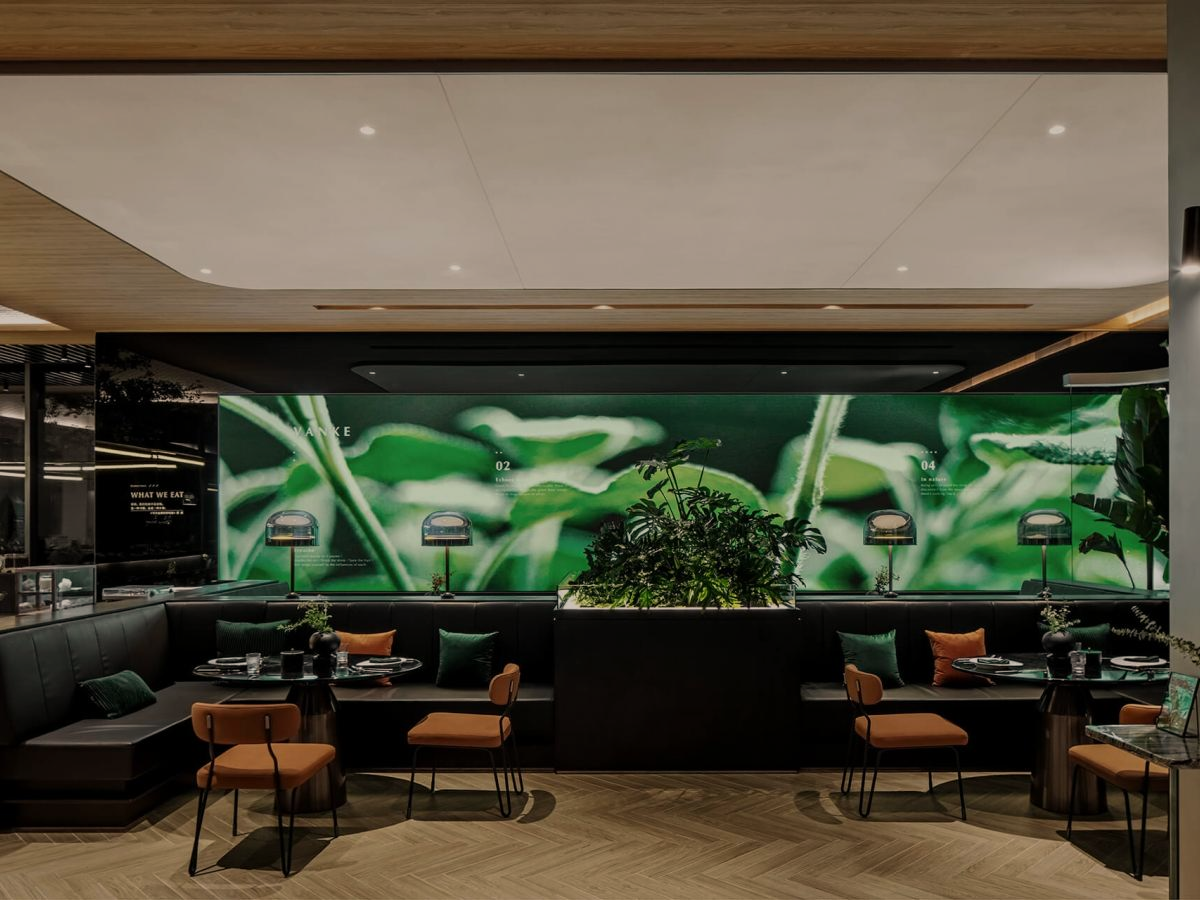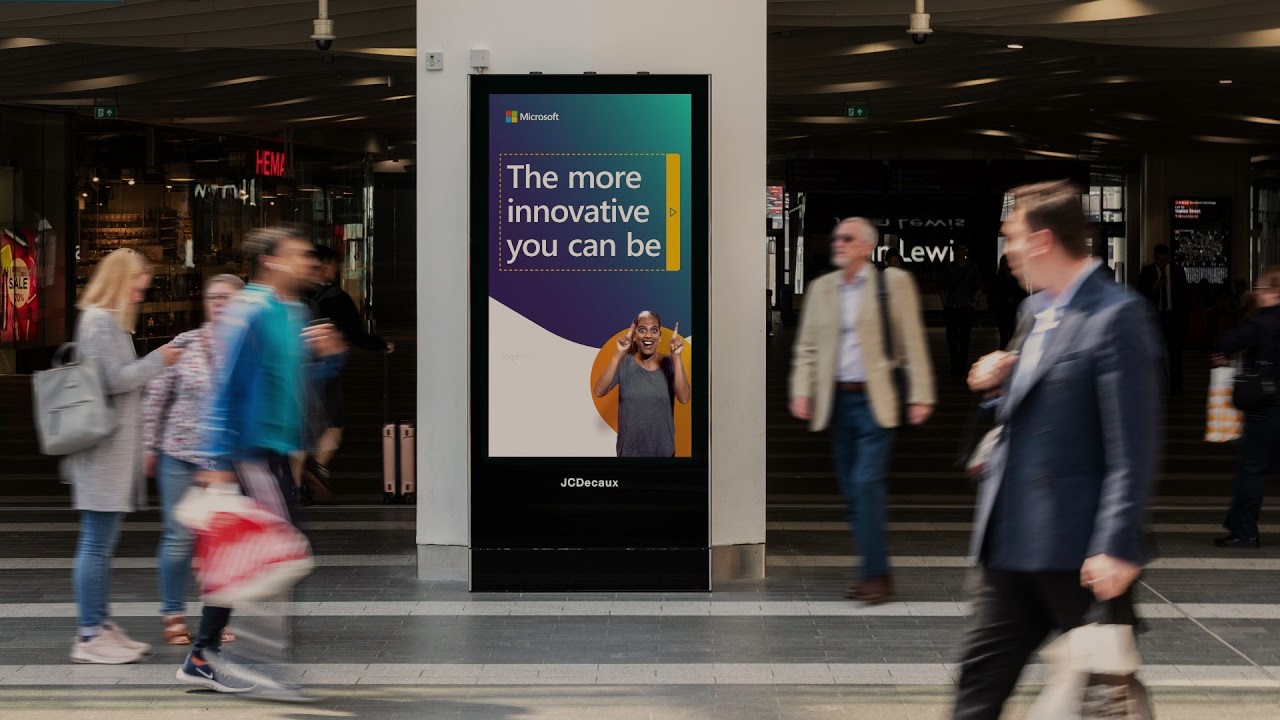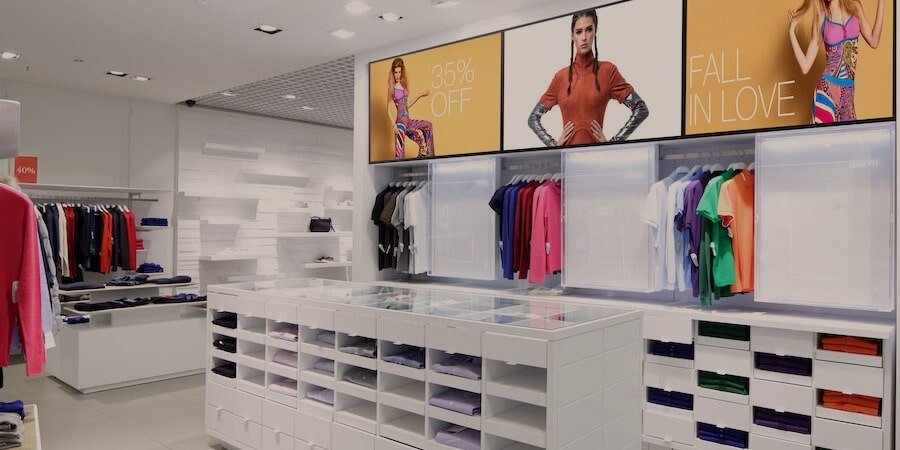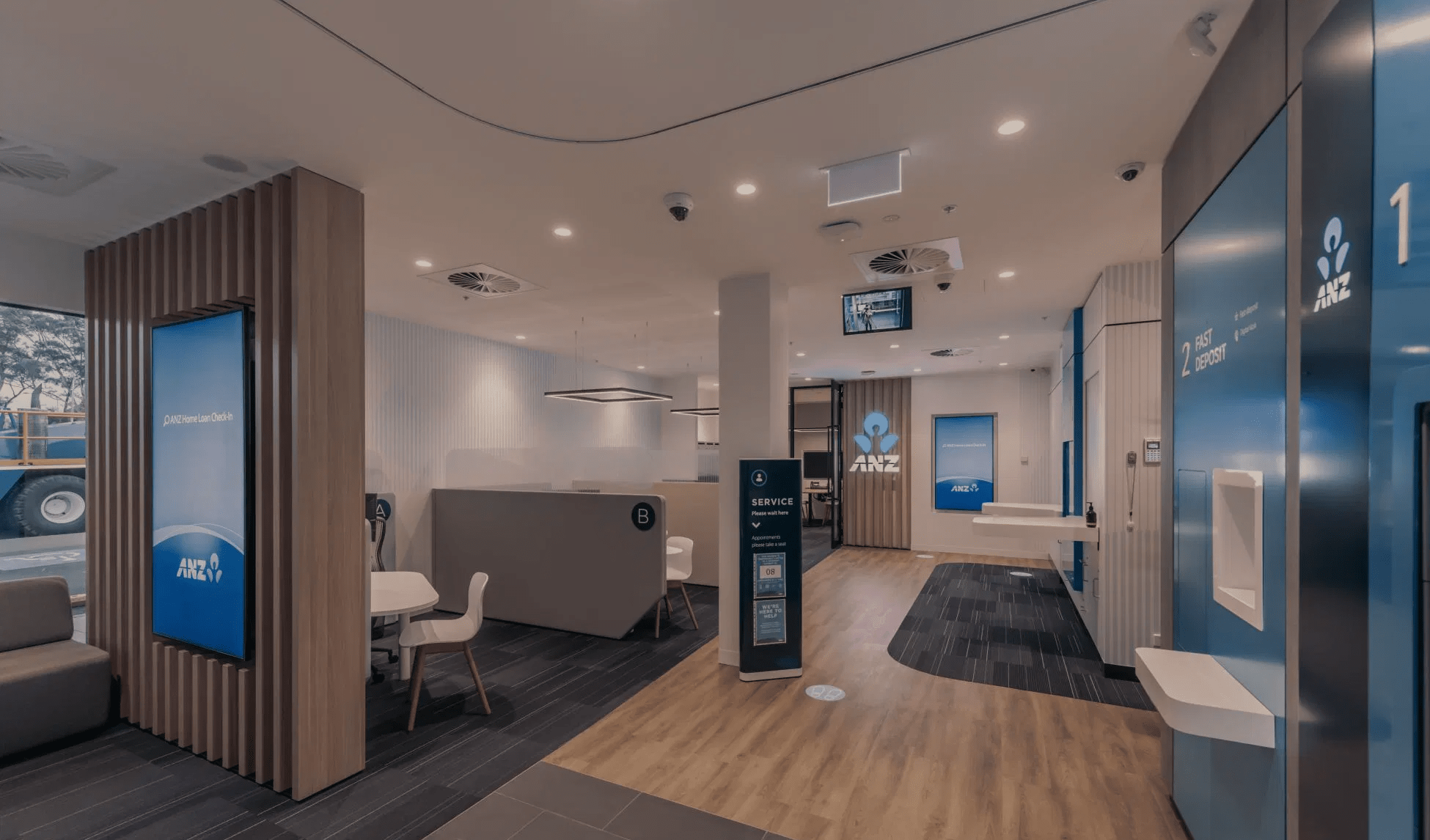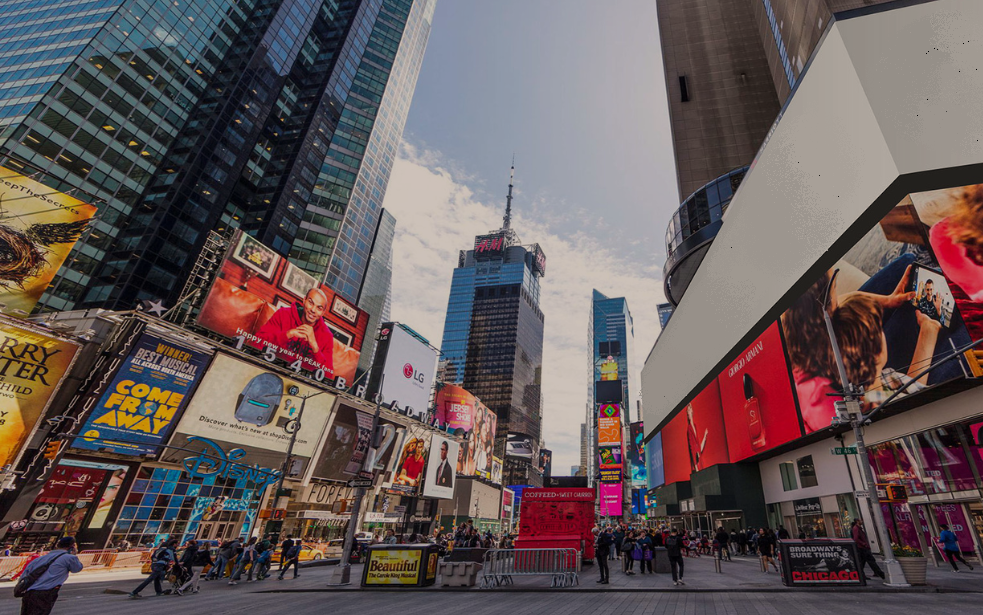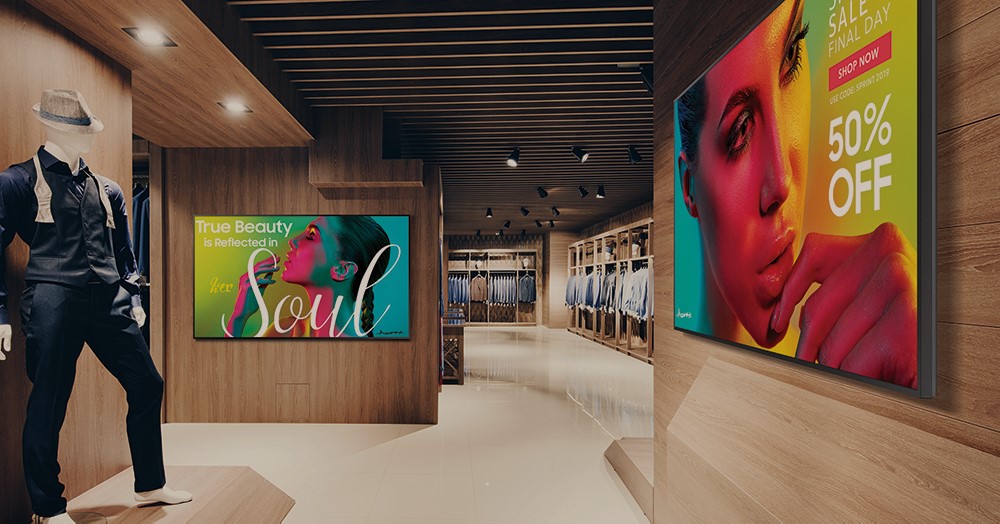Advertising management systems for Digital Signage
Advertising management systems are software suites that allow for the automation of processes associated with the placement, management, and accounting of any type of advertising - including digital display advertising.
Types of Advertising Management Systems
Advertising management systems are compatible with various types of advertisements. Especially notable are the following types:
1. Media advertising. This usually refers to various banners. Clients can place different materials: textual, graphical, on specialized portals. To some extent, such advertising resembles the announcements offered in mass media, but with hyperlinks, animation possibilities, etc.
2. Contextual advertising, which is based on user search queries. It’s placed on specific platforms and is even available on our displays. Specific algorithms depend on the features of the service.
3. Search advertising, which is traditionally textual. Materials are located next to search results. Ads can also be found on partner sites of search engines.
4. Geo-contextual advertising. It’s mostly relevant for mobile devices and depends on the user’s location.
5. Viral advertising. Most often, these are flash applications, various videos, etc. Bright, eye-catching materials attract the audience’s attention, although they can be somewhat intrusive.
6. Product placement in online games. The advertised brand is directly incorporated into the gameplay process.
The systems can also be used with other types of advertising. However, they are most effective with the aforementioned options.
How advertising formats changed on the internet
When advertising first appeared on the internet, it predominantly copied familiar approaches from offline. The most popular format was the banner. The statistics were very basic and did not allow for a thorough analysis of campaign effectiveness. By the way, even the main page of Google once featured a simple graphic banner.
Internet advertising trends changed very quickly. In just a few years, it took on a completely different look. Soon it became possible to receive data about the campaign’s progress in real-time for further optimization. Contextual advertising emerged, where the cost of each click was determined dynamically. The volume of data to be processed, of course, also increased, which led to the need for the emergence of systems for automation.
How Advertising Management Systems appeared
As soon as advertising on the internet gained momentum, there was a need to create systems that would make it even more efficient. Of course, any platform offers its own interface for convenient campaign management. But often their capabilities are not enough, so many tasks remain unresolved. Sometimes special tools are required, some people need convenient views of placement results. Everyone has their own needs, and the platform simply cannot anticipate absolutely everything.
Advertising management systems combine several channels at once. They allow you to determine how effective a campaign was, show additional data, and help make decisions about optimization in the shortest possible time.
In Ukraine, Advertising Management Systems appeared later than in the rest of the world. Initially, they were designed for large-scale companies, as Western markets were larger in themselves. Some companies even operated in several countries at once. After some time, leaders emerged, and leading agencies began to offer more flexible systems, which were adapted to clients’ tasks.
In Ukraine, the first versions of the programs were aimed only at improved management of one platform. Some allowed working with several at once, but did not provide advanced features.
Advertising Management Systems now
Now, Advertising Management Systems are still perceived as sources of ideas for platforms. They respond more flexibly to market demands and also educate clients about something new. Some useful features even become part of the standard set of platform capabilities. For example, banners that show the user those products he has already explored.
You can select unique solutions for advertising on social networks, on screens, on different websites, and so on. Some agencies also offer their own systems convenient for the client. By the way, large advertisers prefer to work through them, as it is more convenient and saves time and money.
It’s important to consider the current needs of clients. In conditions of cost optimization, there arises a need to increase actual profit. For this purpose, performance marketing approaches are used. And for this, powerful tools for analysis, control of screens, and data collection are required. Advertising is multi-channel for almost all advertisers. It’s often effective to talk about a product not only online but also offline – on banners, screens, and so on. Therefore, it’s better to look for a system that takes into account such a feature.
Advantages of Advertising Management Systems
Advertising management systems possess numerous advantages that attract clients. It’s worth highlighting and discussing them:
1. Usable both by webmasters and advertisers. This allows the former to track the entire process of ad placement and automate it. Traffic won’t be wasted, and revenues will significantly increase. Advertisers, on the other hand, can choose the most profitable and thematically appropriate platforms. Furthermore, if desired, they will be provided with detailed statistics and reports, allowing for a more rational budget allocation.
2. Detailed statistics offer insights into how well a specific ad space or platform performed. Some systems can even track visitor actions, later providing a digital signage player report on post-click behavior. This is beneficial, allowing campaigns to be adjusted based on the data obtained.
3. Campaign optimization. Statistics help promptly react to any changes to maximize the benefits of ads.
4. The ability to quickly assess the correctness of a decision made. For instance, an advertiser decides to test multiple approaches and placement formats. The system provides detailed statistics, helping them decide the next steps.
5. The ability to sort platforms based on specific criteria.
6. Systems allow not only for the management of display advertising on websites but also contextual advertising in search engines.
7. Some Advertising Management Systems offer features to create ads.
8. The presence of exchanges through which advertising is bought in real-time, auction-style.
9. The cost of working with such systems is affordable in most cases.
10. No stringent requirements for the client or server-side of the software suite.
11. No need to install any additional programs, many of which are paid.
12. The possibility of receiving remote support in case of problems.
With the help of advertising management systems, even the most extensive advertising campaigns can be created, encompassing promotions through social networks, interactive screens, cloud digital signage, and so on. It’s very convenient that users are not limited in the number of keywords, and they can control expenses down to the last penny. Additionally, these Advertising Management Systems are constantly evolving, with developers regularly adding new features.
Principles of Advertising Management Systems
Advertising management is essential at least for fully analyzing a campaign and enhancing its effectiveness. The improvement in performance is attributed to the following factors:
– analysis and identification of the target audience;
– optimization of coverage using retargeting;
– managing the frequency of advertising contact;
– analysis of user behavior.
Advertising Management Systems provide users with various reports that are useful for anyone wanting to analyze the campaign’s effectiveness at any stage. Moreover, it is very convenient with their help to track the behavior of the target audience for further refinement and adjustments.
It’s worth noting that Advertising Management Systems offer any standard built-in reports, and also allow ordering specialized types, setting up delivery configurations, and more. Their interface is very user-friendly, with the digital signage computer and display screen software making it easy to navigate and understand.
Special Types of Targeting and Display
Modern Advertising Management Systems can use not only standard types of targeting but also specialized and scenario-based ones. The following can be distinguished:
1. Scenario display. This is a sequential display of banners to a user based on a certain algorithm. It significantly increases the attractiveness of the advertisement. It is most often used on streets, particularly on screens with display software. For instance, there’s a technique where an image unfolds progressively each day or week. This option is also in demand on the Internet.
2. Display exclusively for new users. If a person has already seen the banner, they won’t encounter it a second time if they clicked on it earlier. It’s clear that the target action has already been taken, so there’s no need for repetitions.
3. Retargeting. It involves displaying a specially prepared additional banner to users who have previously visited the advertised website but did not take the desired action, for example, did not leave a callback request. This option is effective for massive campaigns attracting thousands of visitors. In some cases, a second display doubled sales numbers.
4. Behavioral targeting based on thematic keywords. Advertisements will only be displayed to users who entered specific queries into search engines. In this case, media advertising will be almost as effective as contextual advertising.
5. Behavioral targeting based on thematic sites. Displaying advertisements to users who have visited certain websites. This factor depends on the activity the person performed on the resource.
These are not all the options, but they are the most popular and effective ones. Of course, systems with display software can work with others as well.
Are Such Systems Always Necessary
Digital signage OS advertising management systems usually do not justify the investments if they are used for small campaigns. In most of these situations, one can handle the setup independently. Moreover, sometimes manual work, not automated, will be more effective.
If the campaign’s volume is very large, then the use of Advertising Management Systems is justified. Such services are particularly indispensable if marketers do not have the appropriate experience in working with advertising cabinets, or if there is a need to run multiple campaigns simultaneously. Moreover, one can resort to them if manual settings did not yield satisfactory results, and a more detailed analysis is needed to address errors.
When all the necessary tools are at hand, it’s convenient. Campaign management becomes simpler and faster. Hence, many large marketing agencies automate processes to enhance efficiency.
How to Choose the Appropriate Service
Beginners, who are not yet familiar with advertising management systems, may naturally ask themselves how to select the best option. We have highlighted several criteria to rely on:
– Transparent Pricing. It should be clear what and how much the advertiser is paying for, and where such figures come from.
– Detailed and Accessible Reports. Analytics should be as simple and understandable as possible; if analyzing it takes too much time, it’s not good.
– Integration with Various Systems. Services like Google should naturally be compatible. Ideally, there should be the possibility of integrating CRM, social networks, and call tracking.
– Availability of Technical Support. A beginner will often have numerous questions, which is normal. It’s crucial that they can contact a support specialist in any convenient way to clarify all nuances.
– Simplicity and User-Friendly Interface. It’s convenient when everything essential is at hand, without any unnecessary elements. Nothing should slow down working with the system.
We also recommend paying attention to the presence of mandatory features — like automatic marking of Statistical link, without which collecting statistics will be impossible, as well as the ability to receive reports in Excel format. Additionally, it would be beneficial for the digital billboard software service to have templates for flexible media planning for screen and creative creation.
How to Sell Advertising Remnants Using Systems with Digital Notice Board Software
Sometimes there are situations when a portion of unsold airtime remains. Very rarely is the advertising space fully utilized. This situation can be turned to one’s advantage. It’s very convenient to sell the remnants of advertising time automatically using specialized services and platforms with digital notice board software. They will handle everything independently, even if a person cannot access the computer at that time.
The mechanism is straightforward. Everything looks approximately like this:
1. The advertiser informs the system that they intend to sell a certain spot for a specified price.
2. The website receives a personal page in the directory. It lists how many advertising spots are available for sale.
3. A link can be published in the relevant section on one’s resource or set up as a placeholder.
4. The advertiser selects the spot of interest and makes payment. The user has the option to decline if the ads are not suitable.
5. The advertisement is then placed on the website.
6. A payout is credited to the user’s account, with the system taking a certain commission.
Advertising management systems allow for the comfortable implementation of various campaigns, including on screens. Currently, there are many solutions for every taste and budget, so selecting the optimal option will not be difficult.
Harnessing the Power of Digital Notice Board Software
In today’s fast-paced digital era, utilizing unsold advertising space has never been more crucial. Leaving these spaces unused is a missed revenue opportunity for businesses. Digital notice board software solutions are not just tools for automation; they represent a paradigm shift in how advertisers can monetize their platforms.
One should not underestimate the potential of these systems. Beyond just selling remnants, they can provide valuable insights into audience preferences, peak interaction times, and the effectiveness of different ad designs. This kind of data-driven approach can lead to more personalized and engaging advertisements, enhancing the overall viewer experience.
Moreover, with the increasing demand for real-time advertising and dynamic content adjustments based on immediate feedback, these software solutions are becoming an indispensable part of a marketer’s toolkit. They cater not just to the needs of advertisers but also to consumers who are looking for more relevant content.
In conclusion, while the challenges of the advertising world are many, so are the tools to address them. Digital notice board software offers a promising avenue to maximize advertising potential, even in situations where spaces might initially seem underutilized. Embracing these technologies is not just an option; it’s a strategic move towards a more efficient and profitable advertising future. As we move forward, businesses that adapt and leverage these tools will undoubtedly have a competitive edge.
Advision is a cloud cross-platform Advertising Management Systems (How it works?).
We help offline business and advertising companies to implement reliable Digital Signage infrastructure using our own software and hardware solutions. Advision is used for DOOH advertising networks, digital signage at points of sale (retail), in the fast food industry for digital menus, and corporate TV.
Customization of software functions is possible to meet the client’s specific requirements.
Share the news

















